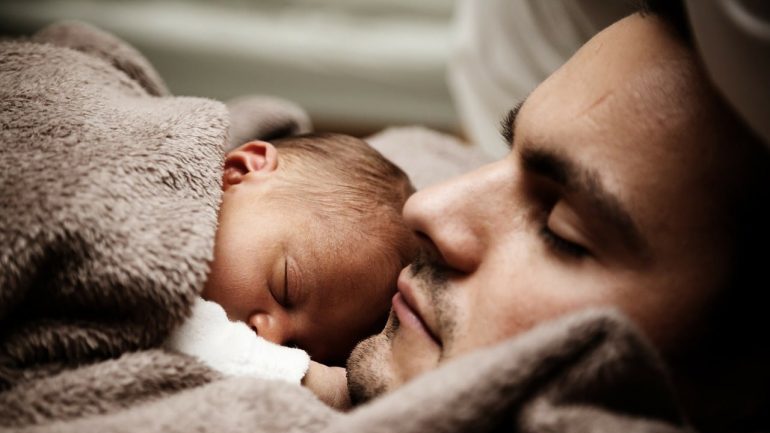23 Crucial SIDS Statistics and Facts for All Parents
written by / January 7, 2022
Only parents know how much they worry about their kids and even when their babies fall asleep, they don’t have time off. SIDS statistics may make you feel anxious, but hopefully, they will help us raise awareness about this problem that affects babies all around the world.
SIDS stands for sudden infant death syndrome and it refers to an unexpected and inexplicable death of an infant. Since SIDS mostly occurs during sleep time, it’s also known as “cot death.” However, baby beds themselves are not the main culprits. In fact, we still can’t put our finger on any particular cause.
Nevertheless, certain risk factors may trigger SIDS, so it’s vital to know how we can create a safe sleep environment for babies. SIDS shouldn’t be the reason for your insomnia, so make sure you did everything to reduce the risk to a minimum.
The Top 10 SIDS Stats and Facts to Remember
- About 1,300 infants died due to SIDS in the US in 2018.
- In 2017, there were 35.4 SIDS deaths per 100,000 live births in the US.
- For most racial and ethnic groups, SIDS is the leading cause of all SUIDs.
- Alaska, Arkansas, Alabama, Kentucky, and Louisiana had the highest SIDS rates.
- Vaccines don’t cause SIDS.
- Babies between one and four months of age are at the highest risk of SIDS.
- There’s an increased risk of SIDS if a baby is sleeping on the stomach.
- Babies whose mothers smoked during pregnancy are 3 times more likely to die due to SIDS.
- The US National Institutes of Health launched the Back to Sleep campaign in 1994.
- Breastfeeding can lower the risk of SIDS by up to 50%.
How Common Is SIDS
Whether you’re a new parent or not, you may be wondering how common SIDS is. In this section, we’ll answer that question.
1. In 2017, there were 3,600 sudden unexpected infant deaths (SUID) in the US.
(CDC)
As its name suggests, SUID is a sudden and unexpected death of an infant younger than one year old. Some of the most common causes of these deaths are suffocation, entrapment, ingestion, cardiac arrhythmias, and SIDS. However, according to the SIDS definition, infant deaths are classified as SIDS when there’s no clear cause of death even after a thorough investigation.
2. About 1,300 infants died due to SIDS in the US in 2018.
(CDC)
SIDS is one of the most common types of SUID. Additionally, current US SIDS statistics show that about 1,300 infants died due to unknown reasons, while suffocation and strangulation in bed caused about 800 infant deaths in 2018.
3. In the US, the SIDS rate decreased by 66% from 1980 to 2010.
(American SIDS Institute)
In 1980, there were 153 SIDS deaths per 100,000 live births compared to 51.6 in 2010. However, the major drop of about 40% can be noticed for the period of 1994 to 2000. In 1994, when the US Back to Sleep campaign (now known as Safe to Sleep campaign) was launched, the incidence of SIDS deaths was 130 per 100,000 live births. The SIDS stats show that it fell to 62.2 per 100,000 live births after only six years.
4. In 2010, there were 6.15 infant deaths per 1,000 live births in the US.
(National Center for Education in Maternal and Child Health)
Sadly, the world death rate among infants is much higher—in 2017, it was 29 infant deaths per 1,000 live births. According to statistics, SIDS was the third leading cause of infant death and the first leading cause of death among infants aged 12 months or younger.
5. In 2017, there were 35.4 SIDS deaths per 100,000 live births in the US.
(CDC)
As you can see, based on recent SIDS facts and statistics, there was a considerable decline from 1990 when the SIDS rate was 130.3 deaths per 100,000 live births. However, there was an increase in the rates of unknown causes of death and accidental suffocation or strangulation in bed. In 2017, they were 33.4 and 24.6 deaths per 100,000 live births, respectively. This can be explained by a shift in SUID classification. In recent years, SUID cases have been more often classified as accidental suffocation or strangulation in bed or unknown cause, and less often as SIDS.
6. For most racial and ethnic groups, SIDS is the leading cause of all SUIDs.
(CDC)
According to SIDS statistics by race, the lowest SUID rate in the 2013–2016 period was among Asian and Pacific Islander infants, amounting to 33.5 deaths per 100,000 live births. On the other hand, the highest SUID rate was among American Indian and Alaska Native infants—295.8 deaths per 100,000 live births. This rate was also pretty high among black infants (181), while it was 85 for white infants.
7. Alaska, Arkansas, Alabama, Kentucky, and Louisiana had the highest SIDS rates.
(MedicalXpress)
Although SIDS statistics by state show that there are great differences in SIDS rates across the US, scientists can’t explain why. Some believe that the explanation may be found in racial and ethnic differences, as well as different smoking rates.
8. New Zealand had the highest SIDS rate worldwide in 2005.
(National Center for Education in Maternal and Child Health)
According to a study that included 13 countries all over the world, the SIDS rate in New Zealand was 0.80 deaths per 1,000 live births. Based on the SIDS statistics by country, the US followed with 0.54 and Argentina was in third place with 0.49. The Netherlands and Japan had the lowest SIDS rates, 0.10 and 0.16, respectively.
Causes of SIDS
What causes SIDS? Here, we’ll be discussing the possible causes of Sudden Infant Death Syndrome.
9. The exact cause of SIDS is still unknown.
(Illinois Department of Public Health)
While more research is needed to find out what causes SIDS, according to a widely accepted theory, the cause of SIDS is an inborn defect in the brain stem. Among other things, this part of the brain is responsible for heart rate and breathing. Infants with this abnormality are at a higher risk, but numerous SIDS facts indicate that there are several other factors that may trigger SIDS, such as sleeping on the stomach and over-bundling the baby. When sleeping on the belly, a newborn is breathing their own exhaled air and thus isn’t getting enough oxygen. While a healthy baby would wake up, newborns with a brain defect continue sleeping while oxygen levels are getting lower.
10. Vaccines don’t cause SIDS.
(Safe to Sleep)
Some people believe that shots, vaccines, and immunizations can lead to SIDS, but there is no scientific evidence for this. However, some studies suggest that there’s a positive relation between SIDS and vaccines, meaning that vaccines may prevent this syndrome. Therefore, all caregivers should take their babies to well-baby checkups and follow their health care providers’ recommendations about the necessary shots.
11. Cribs don’t cause SIDS.
(Safe to Sleep)
Although SIDS is also known as “crib death,” an infant bed is not the actual cause of SIDS. However, the sleep environment may increase the risk of SIDS. That’s why it’s recommended that babies sleep on a firm and flat surface with a fitted sheet. Also, you should avoid using crib bumpers.
Who Is at the Highest Risk of SIDS?
At what age is a baby most likely to suffer from SIDS? Here, we’ll be looking at the risk factors.
12. Babies between one and four months of age are at the highest risk of SIDS.
(Safe to Sleep)
Based on statistical data, most SIDS deaths occur in this period. Additionally, about 90% of SIDS deaths occur among babies younger than 6 months of age. Although all babies younger than one year are at risk of this type of death, baby boys are more likely to die due to SIDS than baby girls. But why does SIDS peak at 2–4 months period of a baby’s life? It seems there’s no scientific explanation for this.
13. There’s an increased risk of SIDS if a baby is sleeping on the stomach.
(Safe to Sleep)
That’s why there are a number of national campaigns around the world that promote back sleeping for babies, both at night and during daytime naps. Hopefully, they will improve the SIDS statistics for 2022 and years to come by educating caregivers about safe sleep practices that can reduce the risk of SIDS.
14. Babies sleeping with a parent in the same bed have a 3–5 times higher risk of SIDS.
(Live Science)
Bed-sharing can increase the risk of SIDS by five times among babies younger than three months old. For older babies aged between three and twelve months, the risk of dying due to SIDS is three times higher when they share a bed with a parent compared to when they sleep separately in the same room. This statistic is enough to give a new parent insomnia.
15. Babies with low birth weights are up to 4 times more likely to die due to SIDS.
(Mayo Clinic)
A study examining SIDS risk by birth weight concluded that newborns with low birth weight are up to four times more likely to die due to SIDS. Also, babies born prematurely or in a multiple birth are at higher risk of SIDS. This is probably because there’s an increased risk that their brains haven’t matured completely, so they don’t have full control over their breathing and heart rate.
16. Babies whose mothers smoked during pregnancy are 3 times more likely to die due to SIDS.
(WebMD)
Additionally, babies exposed to secondhand smoke are at a greater risk of SIDS. Therefore, don’t smoke around your baby and don’t allow others to smoke around him or her.
17. Based on SIDS statistics by mothers’ age, babies whose mothers are younger than 20 are at greater risk of SIDS.
(Mayo Clinic)
Additionally, certain behaviors, such as smoking and using drugs or alcohol, during pregnancy can increase the risk of SIDS. Also, if a pregnant woman doesn’t have adequate prenatal care, her baby is more likely to die due to SIDS.
SIDS Prevention
How do you prevent SIDS? In this section, we’ll be looking at ways new parents can protect children against SIDS.
18. The US National Institutes of Health launched the Back to Sleep campaign in 1994.
(Illinois Department of Public Health)
The goal was to educate parents and caregivers about the importance of back sleeping. Today, this initiative is known as the Safe to Sleep campaign and it’s aimed to spread the word about ways to minimize risk factors of SIDS and other sleep-related causes of death among babies. As the stats from 2017 and 2016 show, the SIDS rate in the US was considerably lower compared to those from the 1990s.
19. SIDS still can’t be prevented completely.
(Safe to Sleep)
Unfortunately, we can’t prevent SIDS. More research is needed to find out the main cause of SIDS and hopefully an effective way to prevent it. Until then, anyone taking care of a baby should know the answer to what is SIDS, and try to reduce its risk by following the recommendations of the American Academy of Pediatrics.
20. From 1994 to 2009, there was a sharp increase in the rate of back sleeping.
(Safe to Sleep)
SIDS risk factors statistics show that in 1994, 27% of babies slept on their back, while in 2009, about 74% of caregivers said that they used the back sleeping position for their babies. This proves the efficacy of the Back to Sleep campaign.
21. Breastfeeding can lower the risk of SIDS by up to 50%.
(WebMD)
Even though this fact is backed up by breastfeeding and SIDS statistics, scientists haven’t explained why breastfeeding can lower the risk of SIDS. Some claim that breast milk boosts the baby’s immune system and protects them from infections that may increase the risk of SIDS.
22. Sleeping with a pacifier can reduce the risk of SIDS.
(WebMD)
Certain studies suggest that pacifiers may prevent SIDS. However, if your baby doesn’t want a pacifier, don’t force them to use it. Also, when a pacifier falls out of the baby’s mouth during sleep, you don’t need to put it back. So how does a pacifier help prevent SIDS? In Scientific American, De-Kun Li, a reproductive epidemiologist, explains that a pacifier’s bulky handle prevents a baby from burying its face in soft bedding. However, it’s very important that you don’t attach the pacifier to anything since a string or a similar item can be dangerous because of suffocation, choking, or strangulation.
23. A SIDS monitor or a similar device can’t reduce the risk of SIDS.
(Mayo Clinic)
The American Academy of Pediatrics advises parents not to use baby monitors that are advertised as an effective way of reducing the risk of SIDS since their safety and effectiveness haven’t been properly tested.
To Sum Up
Since the introduction of the Back to Sleep campaign, now known as Safe to Sleep, which is aimed at educating parents and all caregivers about the risk of sudden infant death syndrome, SIDS statistics for 2022 should have considerably improved. That’s why we decided to contribute to raising awareness about this problem and its possible solutions. It’s comforting to know that we can help our babies sleep more safely. So when trying to create a peaceful sleep environment for you and your little angel, also think about their safety. Hopefully, researchers will soon also learn how to prevent SIDS from ever occurring but until then, we should do everything to reduce its risk.











